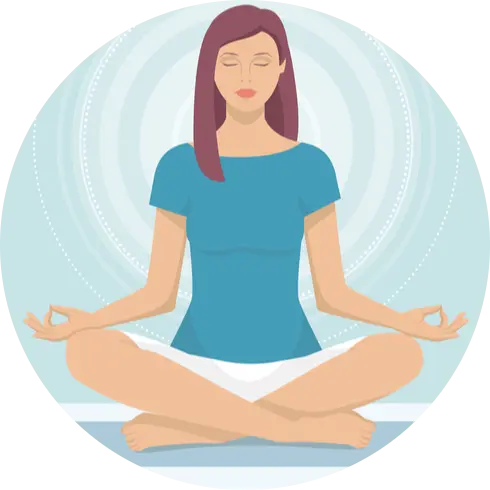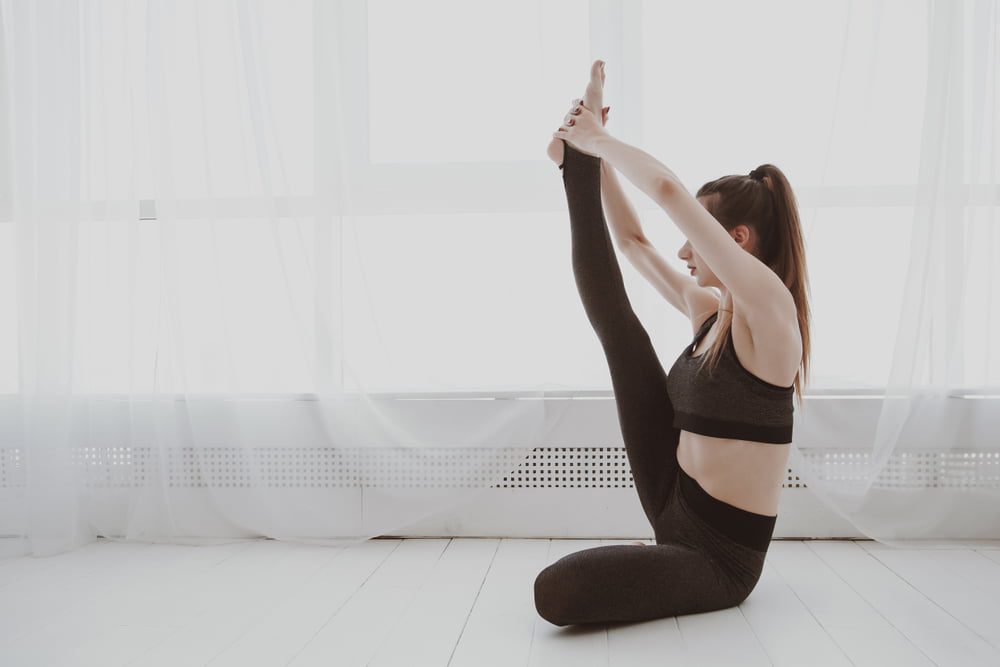Heron Pose, also known as Krounchasana in Sanskrit, is a popular yoga pose that offers a wide range of benefits for both the body and mind. This pose is named after the heron, a beautiful bird known for its grace and elegance. In Heron Pose, practitioners mimic the bird’s posture, creating a sense of strength, stability, and poise. This article will explore the various benefits of Heron Pose, provide a step-by-step guide on how to do it correctly, and highlight some precautions to keep in mind while practicing this pose. Whether you are a beginner or an experienced yogi, incorporating Heron Pose into your yoga routine can offer numerous advantages for your overall well-being.
Benefits of Heron Pose Yoga.
Heron Pose Yoga, also known as Krounchasana, is a powerful yoga pose that offers numerous physical, mental, and emotional benefits. Here are some of the key advantages of practicing Heron Pose Yoga:
1. Increased flexibility.
Heron Pose Yoga involves deep stretching of the hamstrings, calves, and lower back. Regular practice helps to improve flexibility in these areas, allowing for better mobility and reducing the risk of injuries.
2. Strengthened leg muscles.
Holding the Heron Pose requires engaging the muscles in the legs, including the quadriceps and hamstrings. This helps to build strength and endurance in the lower body, leading to improved balance and stability.
3. Improved digestion.
The compression of the abdomen during Heron Pose stimulates the digestive organs, enhancing their function and promoting better digestion. This can alleviate issues like bloating, constipation, and indigestion.
4. Toned core muscles.
As you balance in Heron Pose, your core muscles are activated to maintain stability. This not only helps to tone and strengthen the abdominal muscles but also supports a healthy posture and spinal alignment.
5. Enhanced concentration and focus.
The combination of balance, deep breathing, and concentration required in Heron Pose Yoga helps to calm the mind and improve mental focus. Regular practice can sharpen cognitive abilities and enhance overall concentration.
6. Stress relief and relaxation.
Engaging in Heron Pose Yoga encourages deep breathing and relaxation, activating the parasympathetic nervous system. This promotes a state of calmness and reduces stress and anxiety, leading to improved mental well-being.
7. Improved posture and spinal health.
Heron Pose Yoga involves sitting with an elongated spine, which helps to improve posture and strengthen the back muscles. This can alleviate back pain, correct postural imbalances, and promote a healthy spine.
8. Increased hip mobility.
The hip joint is a common area of tightness for many individuals. Heron Pose Yoga involves opening and stretching the hips, increasing their range of motion and relieving tension in the hip flexors.
9. Boosted circulation.
The various movements and stretches in Heron Pose Yoga help to improve blood circulation throughout the body. This increased circulation delivers more oxygen and nutrients to the cells, promoting overall health and vitality.
10. Mind-body connection.
Heron Pose Yoga encourages a deep connection between the mind and body through conscious breathing, focus, and awareness. This helps to cultivate mindfulness and self-awareness, fostering a greater sense of well-being and self-acceptance.
| 💡 Tips FitnessQuora.com Incorporating Heron Pose Yoga into your regular practice can provide a multitude of physical, mental, and emotional benefits, contributing to a healthier and more balanced lifestyle. |
How To Do Heron Pose Yoga?
If you are interested in practicing Heron Pose, here is a step-by-step guide on how to do it correctly:
1. Begin by sitting on the floor with your legs extended straight in front of you. Keep your spine elongated and your shoulders relaxed.
2. Bend your right knee and draw it towards your torso, ensuring that your foot remains grounded on the floor.
3. Take hold of your right foot with both hands, clasping your fingers around the sole or ankle, depending on your comfort level.
4. Inhale deeply, lengthening your spine even further, and exhale as you gently lift your right leg off the floor. As you do this, try to keep your back straight and maintain balance.
5. Straighten your right leg as much as possible without forcing it. This may take some time and practice, so be patient with yourself.
6. Once your leg is fully extended, flex your right foot, pointing your toes towards the ceiling. This will help deepen the stretch and engage the muscles in your leg.
7. Keep your left leg firmly grounded on the floor, maintaining stability and balance throughout the pose.
8. Slowly and mindfully, tilt your upper body forward from the hips, hinging at the waist. Reach towards your right foot with your hands, trying to bring your torso closer to your leg. Remember to keep your spine long and avoid rounding your back.
9. Find a comfortable position for your hands – you can either hold onto your foot, ankle, or shin, depending on your flexibility. The key is to avoid straining or overstretching.
10. Stay in this pose for several breaths, focusing on your breath and allowing your body to relax and surrender into the stretch. With each exhale, you can try to deepen the stretch gently, but always listen to your body’s limits.
11. When you are ready to release the pose, slowly and with control, bring your torso upright, releasing your foot and placing it back on the floor.
12. Take a moment to observe any sensations or changes in your body, and then repeat the same steps on the other side, bending your left knee and extending your left leg.
| 💡 Tips FitnessQuora.com Remember, as with any yoga posture, it is crucial to listen to your body and respect its limitations. If you have any pre-existing injuries or medical conditions, it is advisable to consult with a qualified yoga instructor before attempting Heron Pose. Regular practice of this pose can help improve flexibility, strengthen the muscles, and cultivate a sense of calm and focus. Enjoy the journey of exploring Heron Pose and the transformative benefits it can bring to your yoga practice. |
Who Can Do Heron Pose Yoga?
Anyone who is looking to improve their balance, flexibility, and core strength can benefit from practicing Heron Pose yoga. This pose, also known as Krounchasana, can be modified to accommodate different skill levels, making it accessible to a wide range of yoga practitioners.
Beginners can start by sitting on a blanket or block to reduce the intensity of the stretch, while more advanced practitioners can deepen the pose by straightening their lifted leg and reaching for their extended foot. However, individuals with knee or ankle injuries should exercise caution and consult with a healthcare professional before attempting this pose. With regular practice and proper alignment, Heron Pose can help individuals develop a sense of groundedness, enhance focus, and promote overall well-being.
Who Should Avoid Heron Pose Yoga?
While Heron Pose offers numerous benefits like stretching the hamstrings and improving digestion, there are certain individuals who should avoid attempting this pose. Individuals with knee injuries, particularly those with ligament tears or severe arthritis, should avoid Heron Pose as it places a significant amount of strain on the knees.
Pregnant women should also avoid this pose, especially during the later stages of pregnancy, due to the pressure it exerts on the abdomen. Additionally, individuals with chronic back pain or spinal issues should exercise caution or seek guidance from a qualified yoga instructor before attempting this pose. It is crucial to prioritize safety and listen to one’s body when deciding whether or not to practice Heron Pose.
Precautions To Take While Doing Heron Pose Yoga.
– Warm up your body properly before attempting the Heron Pose to prevent any strains or injuries.
– Practice on a non-slip surface or use a yoga mat to ensure stability and avoid slipping.
– Start with the basic version of the pose and gradually progress to more advanced variations as your flexibility and strength improve.
– Engage your core muscles to maintain balance and stability throughout the pose.
– Avoid forcing your body into the pose; instead, listen to your body and only go as far as you feel comfortable.
– If you have any knee or hip injuries, use props like blankets or blocks to support your knees and hips.
– Focus on your breath and maintain a relaxed state of mind while performing the pose to enhance the benefits and avoid unnecessary strain.
– If you have any pre-existing medical conditions, such as high blood pressure or glaucoma, consult with a healthcare professional before attempting the Heron Pose.
– If you experience any pain or discomfort during the pose, slowly release and come out of the pose.
Bottom Line.
Heron Pose Yoga offers numerous benefits for both the mind and body. By practicing this pose regularly, individuals can improve their balance, strengthen their leg muscles, and increase their flexibility. Additionally, Heron Pose Yoga helps to calm the mind, reduce stress, and enhance concentration. Whether you are a beginner or an experienced yogi, incorporating Heron Pose into your practice can greatly contribute to your overall well-being. So, why not give it a try and experience the transformative effects of Heron Pose Yoga for yourself?

 Workout
Workout
 Meditation
Meditation





 Contact Us
Contact Us





